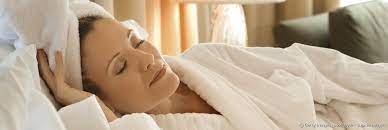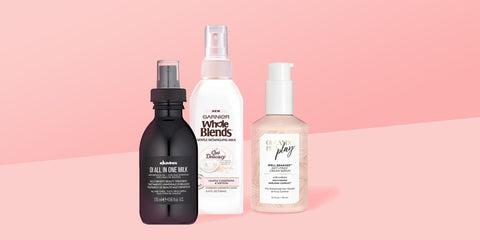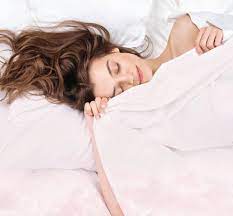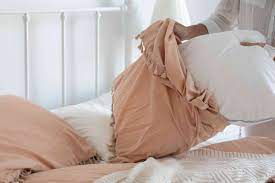Do You Always Sleep With Wet Hair?
Let’s take a closer look at what really happens when you sleep with wet hair.
Will I Catch a Cold?
We'll start here with the number one question. Colds result from coming into contact with one of over 200 strains of viruses. We catch colds from a virus, not from being physically cold.

That said, here’s what sleeping with wet hair will actually do...
Your Hair May Look a Little Crazy in the Morning
When sleeping with wet hair, you are more likely to encounter friction, frizz, and tangles—especially if you toss and turn a lot. Keep in mind that wherever your head touches the pillow may cause uneven drying and texture. Come morning, one side may be wetter or curlier than the other.
Routinely Sleeping With Wet Hair Can Lead to Breakage
Your hair is at its weakest state when it’s wet. Wet hair swells, causing the cuticle (exterior) to open up, which leaves strands stretchy, brittle, and susceptible to breakage. Essentially, it takes less force to break the hair when it’s wet versus dry. Things like sleeping on top of your hair, moving around in your sleep, and making it a habit to sleep with wet hair will contribute to damage over time.
You’re More Likely to Get a Fungal Infection
If you deal with dandruff on the regular, it’s probably not a good idea to sleep with wet hair. Dandruff is triggered by an overabundance of a yeast-like fungus (Malassezia) that is always present on your scalp. Like most microorganisms, fungus and bacteria thrive in warm, damp environments and can cause a variety of scalp issues like dandruff and folliculitis. Another thing to consider is your pillowcase. A 2005 study about fungus on bedding found between 4 to 16 different strains on each sample tested. How’s that for inspo to start drying your hair?

However, there are always exceptions and circumstances out of our control. If you’re going to sleep with wet hair, here’s what you should do...
How to Sleep With Wet Hair:
1. Use a Leave-In
Give your strands a dose of leave-in hydration. This helps to lock-in moisture, enhance your natural texture, and smooth frizz and fly away.

2. Air Dry First
This enables your hair to get rid of excess moisture before you snooze. Hair should not be soaking through your pillow and instead should be only lightly damp.
3. Shower Earlier
Two birds, one stone. You get your shower out of the way earlier and give your hair more time to air dry before going to sleep.
4. Mix it Up
To help avoid excess damage, don’t go to bed with wet hair every night. Change it up by blow drying one night and giving yourself ample time to air dry the next.
Protective Styling
Instead of a tight topknot, wear a loose bun or braid to minimize tension and friction. Bonus: Wake up to beautiful, wavy texture with next to no effort.

5. Sleep With Silk
Try silk scrunchies for a gentle and comfortable option that you can use on the above hair styles to protect your hair and help keep it damage free. Or try sleeping on a silk pillowcase—it’s less drying and minimizes friction on the hair.

6. Wash Your Bedding Regularly
This probably comes as no surprise, but it's a good habit to wash your sheets and pillowcases at least once a week. Doing so helps you minimize contact with pesky microorganisms that can lead to hair and skin conditions.

Takeaway:
Since your hair is unique to you, you have to decide if it’s worth it to sleep with wet hair. You may find it gives your hair a lovely texture or saves you precious time. It’s important to keep in mind the state of your hair and scalp and how they react when you sleep with wet hair. When it comes down to it, genetics, frequency of heat styling, color treating, and the overall condition of your hair are indicators of whether or not your hair is resilient enough. So, if you notice breakage or scalp discomfort, then sleeping with wet hair may not be for you.
Tell us, do you sleep with wet hair? What are your best tips for doing so?
Share with us on review.
Hair Products: View More
